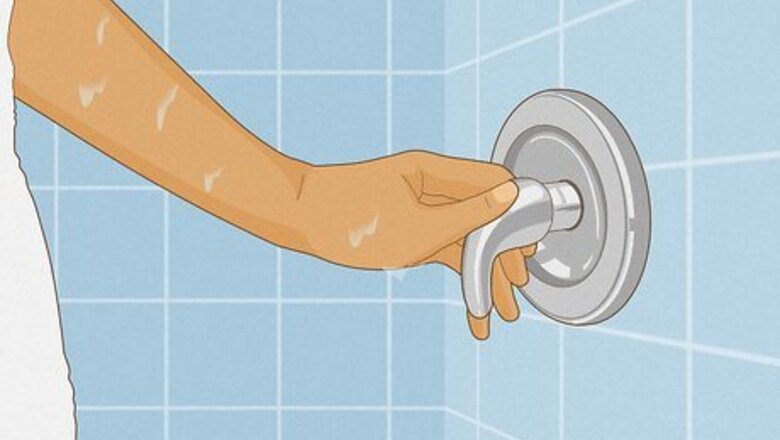
views
Applying Body Butter
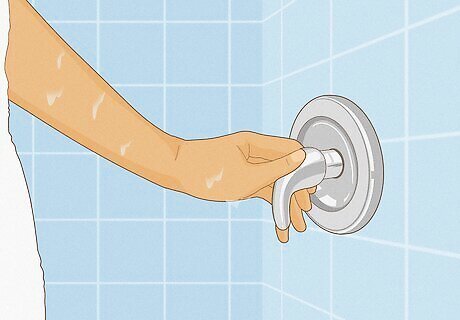
Use body butter within 5 minutes of showering. Aparna Ghosh, a licensed esthetician, recommends using body butter after you shower for the best results. Apply the lotion right after a shower to help seal in the moisture to keep your skin hydrated. Showering strips your skin of moisture and natural oils, especially if you use hot water. Moisturizing right after a shower can help nourish your skin and keep it from drying out.
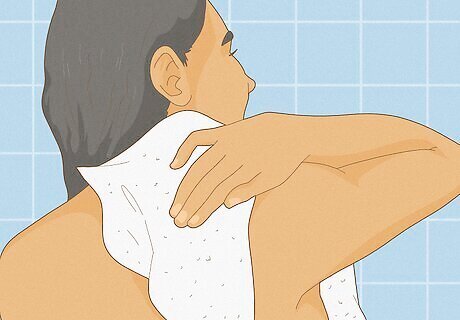
Dab wet skin dry with a towel before applying body butter. If you’re putting on body butter right out of the shower, make sure your skin isn’t soaking wet or completely dry. While body butter can seal in a light layer of moisture, it can be hard to smooth on if you have too much water on your skin.
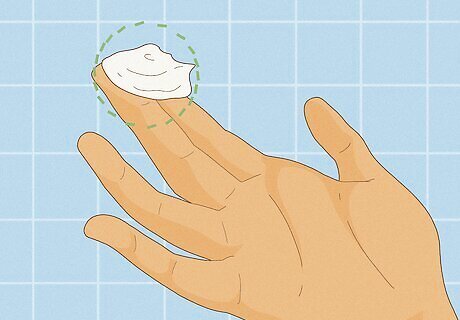
Scoop out about a dime-sized amount of body butter. Use your fingers or a spatula to take the body butter out of the container. It’s best to apply the body butter in small amounts, as it may take longer to apply than a typical lotion. So, start with a smaller amount than you’d think you need. Remember, you can always apply more. Some prefer to use a spatula to scoop out the product so it doesn’t get under nails or get contaminated with bacteria that may be on hands. If your body butter is in a squeeze container, apply the butter directly from the container onto your skin.
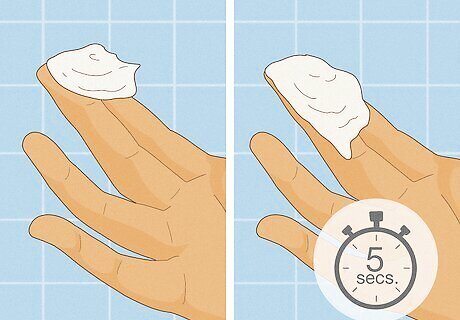
Wait a few seconds for the warmth in your skin to melt the body butter. Let the body butter warm in your fingertips, hands, or skin before rubbing it in. This allows the product to heat up, making it easier to smooth on.

Rub in the body butter using long, firm strokes. Use the palm of your hands for the easiest application. You can also work it in over the joint areas, such as your knees, ankles, and elbows, using firm, circular strokes. Stop rubbing the body butter once you've smoothed it into a thin, even layer. Your skin may look slightly greasy.
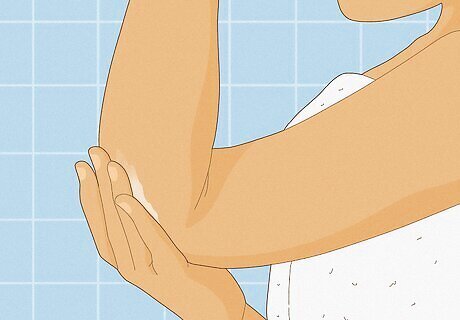
Dab a second layer of body butter onto dry spots, like your elbows. You may also want to add more body butter onto your feet, knees, hands, and anywhere that looks dry and cracked. Remember to keep your layers light and even so that the body butter doesn’t make your skin greasy. If you apply too much, you can wipe it off with a towel.
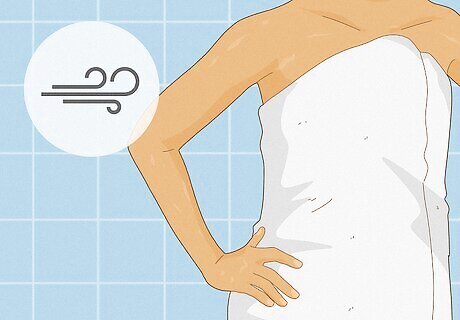
Let the body butter dry for a few minutes before putting on clothes. Keep in mind that body butter takes a little more time to soak into your skin than lotion does. You’ll know it’s dry when your skin doesn’t feel greasy. If you put on your clothes too early, you can get body butter on your clothes. Although body butter doesn't usually stain, there’s no guarantee.

Avoid using body butter on your face. As Ghosh warns, the thickness and properties of body butter can clog your pores, so it’s best to avoid putting it on your face. Instead, stick to moisturizers formulated for the face to avoid acne or pimples.
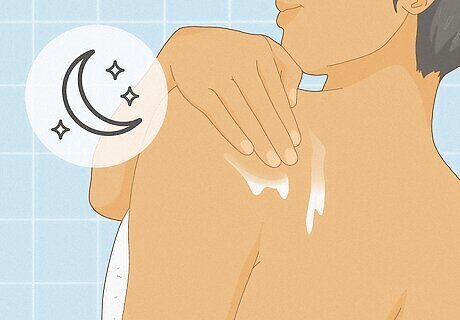
Apply body butter before bed for an intense moisture treatment. When you sleep with the body butter on your skin, it has more time to soak in. Additionally, the heat from the blankets can warm you up, providing a more intensive treatment. If you have dry skin, try doing this every day to help soften your skin. If your skin is normal or oily, consider doing an intensive moisture treatment once a week or as needed. Keep in mind that some of the body butter might rub off on your blankets. In rare cases, it can cause oil stains on the fabric.
Overnight Treatment for Dry Hands & Feet
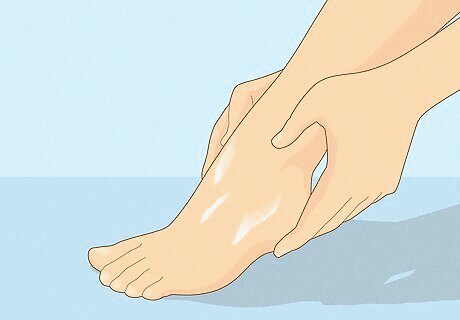
Apply a thin layer of body butter to your feet just before bed. Start with a pea-sized amount and add more as needed. Pay special attention to dry areas, as well as your ankle joint. You can wait a few minutes for it to dry before proceeding, but you don't have to if you don't mind getting body butter on your socks.

Put socks on your feet. You can put the socks on over wet body butter, if you don't mind getting the product on your socks. The socks help seal in the moisture and keep the butter on your feet.
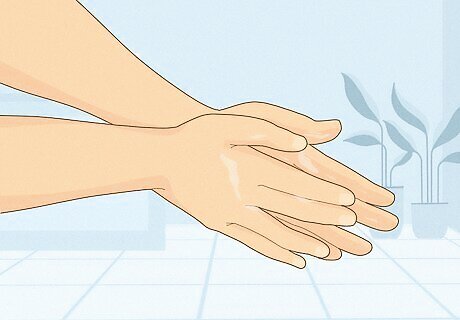
Smooth a thin layer over your hands. Start with a pea-sized amount and add more if necessary. Work the body butter into your skin, paying special attention to your knuckles and any dry areas. You can use body butter over cracked skin, if you’d like. It will help the damaged skin heal faster. However, it's best not to use it if your skin is bleeding.
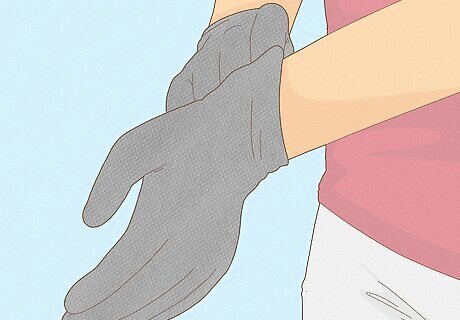
Pull on a pair of gloves. You can use normal mittens, but microfiber gloves made for sealing moisture into your hands work best. The gloves help seal in the body butter so that it can treat your hands overnight. If you put the gloves on when the body butter is still wet, your overnight treatment will be more intense.
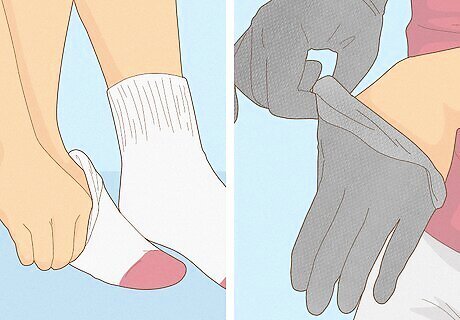
Remove your socks and gloves in the morning. Your skin should feel soft and smooth! Wash any remaining body butter from your skin, and make sure to wash your socks and gloves before their next use.
Treating Skin Conditions

Choose an unscented body butter for sensitive skin and skin conditions. Ghosh explains that fragrances can cause skin irritation, so you should not use them on skin that is already damaged or extremely sensitive. Check the label to make sure that the body butter you plan to use is fragrance-free. For stretch marks, look for a blend that contains vitamin E and a blend of butters, such as shea or cocoa butter. For eczema or psoriasis, look for a blend that contains jojoba oil or Ucuuba. For dry, irritated skin and wrinkles, opt for pumpkin seed butter.
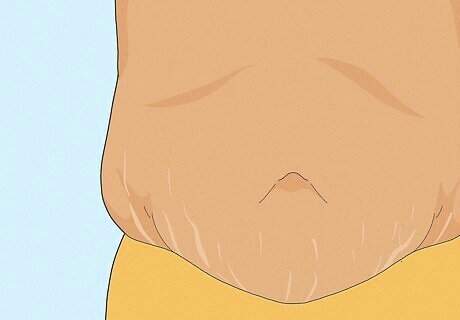
Treat cracked skin, wounds, irritation, and stretch marks with body butter. Body butter is great for helping your skin heal! The typical ingredients used in body butter, such as shea butter or cocoa butter, are traditional skin treatments in some cultures. It’s a rich moisturizer that can nourish your skin. For example, body butter can help with eczema, psoriasis, chapped skin, and sunburn. Don't use body butter to treat skin that is bleeding. Ask your doctor before using body butter to treat a medical condition.
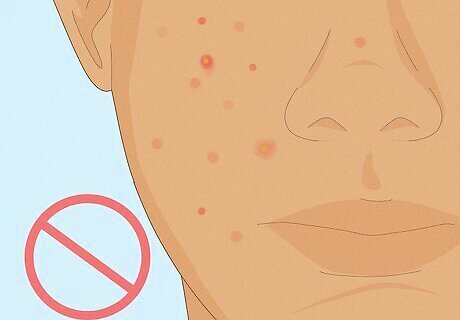
Avoid using body butter to treat conditions like acne or a rash. The body butter could make these conditions worse. Keep in mind that body butter can clog your pores, so you may aggravate the condition. Instead, choose products formulated to treat these conditions.
What is body butter?
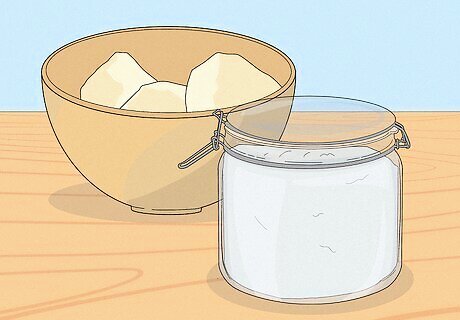
Body butter is a thick moisturizer made of shea butter and plant-based oils. Unlike regular body lotions, body butter is incredibly thick—hence the name! The thick, buttery soft substance typically comes in a jar or tub and is scooped onto the skin. Because of their thick nature, body butters tend to have more moisturizing and nourishing properties than other lotions and can help keep the skin hydrated longer. Body butters are formulated without water, giving them a thicker, more solidified texture at room temperature.
How often should you use body butter?
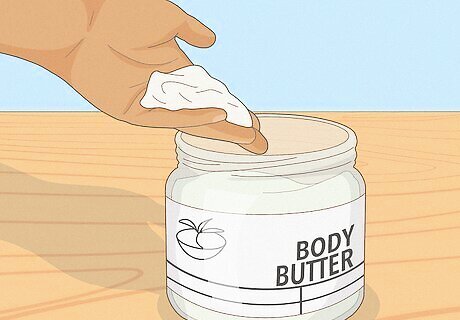
Use body butter as needed for your skin. When you use body butter is entirely up to you! Just like regular body lotion, body butter can be applied whenever you need it. For instance, if you have dryer skin, aim to use it daily; if you have oily skin, consider using it as a weekly treatment. Don’t be afraid to experiment! Try applying the body butter in different amounts or times to find what feels best for your body and skin.
How to Choose a Body Butter
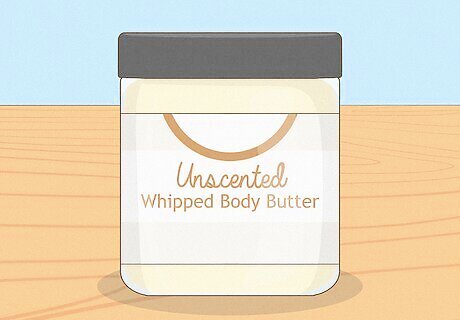
Choose a spreadable body butter made of plant-oils for easy use. These body butters are often labeled as “whipped.” Look for blends that contain oils or butters that are liquid at room temperature, such as coconut oil, jojoba oil, almond oil, or grapeseed oil. This makes the body butter easy to scoop out and apply to your body. If you choose a body butter that is thicker or solid at room temperature, you can still use it as a moisturizer. Scoop out the amount you want to use, then give it a moment to melt in your palm.
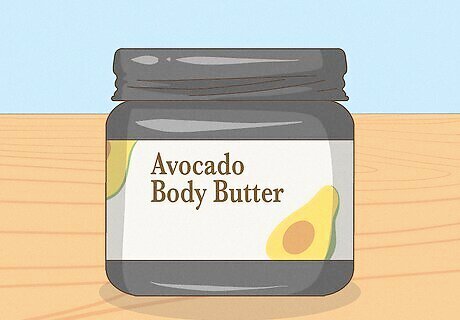
Choose a blend with avocado, mango, or olive butters for intense moisture. These butters are very moisturizing and can help heal dry hands or feet, even if the skin is cracked. Ideally, your body butter should also contain other thick butters, such as shea or cocoa butter. For this type of treatment, a thicker body butter is usually the best option, as it will contain richer ingredients. These body butters may be solid at room temperature, but they will melt in your hand.
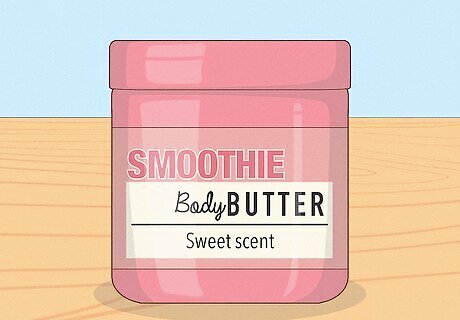
Pick a fragrance you love. One of the many beautiful things about body butters is that they come in a variety of smells. Choose a body butter that compliments your perfume or makes you feel relaxed. The scent can last all day between washes. If you have sensitive skin, be careful around scented body butters and lotions as fragrances could irritate your skin. To be on the safe side, opt for fragrance-free body butters to nourish your skin.




















Comments
0 comment